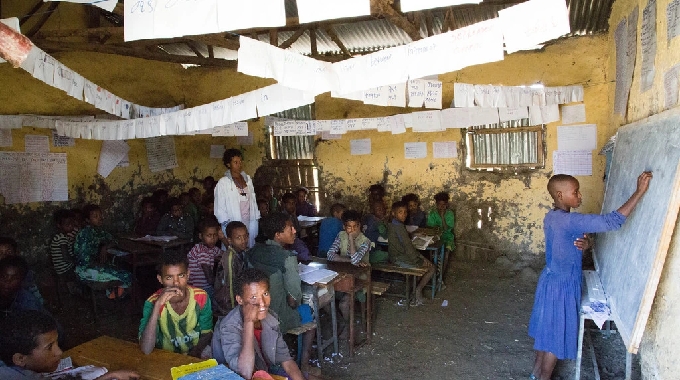In 2023, nearly 282 million people across 59 countries experienced acute hunger, according to the Global Report on Food Crises, with war-torn Gaza facing the largest number of people in famine conditions.
The UN report highlighted a sharp increase in food insecurity, particularly in the Gaza Strip and Sudan, resulting in 24 million more people suffering from acute food shortages compared to 2022. The number of countries facing food crises under monitoring has also expanded.
Maximo Torero, chief economist for the UN’s Food and Agriculture Organization, noted that 705,000 individuals in five countries are classified at Phase 5, the highest level on the hunger scale established by international experts.
This figure marks the highest number recorded since the inception of the global report in 2016, quadrupling the initial count from that year.
Over 80% of those on the brink of famine, totaling 577,000 individuals, resided in Gaza, with significant numbers also found in South Sudan, Burkina Faso, Somalia, and Mali.
According to future projections outlined in the report, approximately 1.1 million people in Gaza, amid the ongoing Israel-Hamas conflict, and 79,000 in South Sudan are anticipated to reach Phase 5 and confront famine conditions by July.
Conflict is expected to persist as a driver of food insecurity in Haiti, where gang control over parts of the capital exacerbates the situation.
Additionally, while the El Niño phenomenon peaked in early 2024, its full impact on food security, including flooding and poor rainfall in parts of East Africa, as well as drought in southern Africa—especially in Malawi, Zambia, and Zimbabwe—is anticipated to unfold throughout the year.
UN Secretary-General Antonio Guterres described the report as “a roll call of human failings,” lamenting that “in a world of plenty, children are starving to death.”
He emphasized in the report’s foreword that the conflicts erupting over the past 12 months exacerbate an already dire global situation.
Guterres singled out the conflict in the Gaza Strip, where the highest number of people face catastrophic hunger.
He also highlighted the year-old conflict in Sudan, which has led to the world’s largest internal displacement crisis, with devastating impacts on hunger and nutrition.
The report reveals that over 36 million people across 39 countries and territories are currently grappling with an acute hunger crisis, just one step below the famine threshold in Phase 4.
More than a third of these individuals are situated in Sudan and Afghanistan. This marks an increase of one million people compared to 2022, indicating a deteriorating situation.
Arif Husain, the UN World Food Programme’s chief economist, observed that the numbers of those facing acute food insecurity have been steadily rising since 2016, now surpassing double the pre-Covid-19 figures.
While the report focuses on 59 countries, efforts are being made to collect data from 73 countries where individuals are experiencing acute food insecurity.
Secretary-General Mr. Guterres underscored the need for an urgent response to the report’s findings, emphasizing the importance of addressing the root causes of acute hunger and malnutrition while also transforming food supply systems.
He stressed that funding is not keeping pace with the needs, highlighting the crucial requirement for both funding and access to effectively address acute food insecurity.
Arif Husain from WFP echoed this sentiment, emphasizing that funding and access are interlinked and essential for combating acute food insecurity.
The report serves as the leading publication of the Food Security Information Network, developed through collaboration among 16 partners comprising UN agencies, regional and multinational bodies, the European Union, the US Agency for International Development, technical organizations, and various others.
YOU MAY ALSO READ: Philippine regulators join forces with Google and Apple to remove Binance apps amid mounting crisis









Got a Question?
Find us on Socials or Contact us and we’ll get back to you as soon as possible.